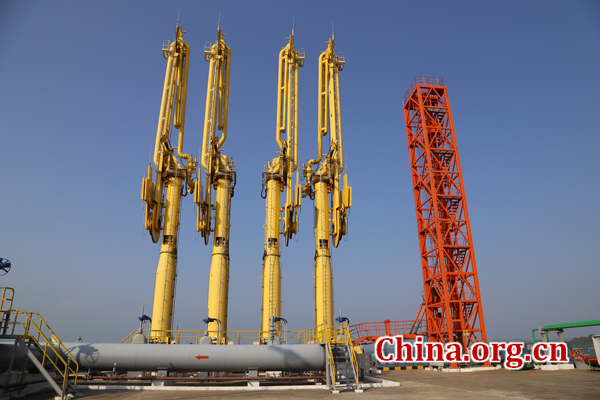China-Myanmar pipelines: 'Paukphaw' route

- By Zhang Lulu
 0 Comment(s)
0 Comment(s) Print
Print E-mail China.org.cn, May 9, 2017
E-mail China.org.cn, May 9, 2017
It is scorching hot on Made Island in Myanmar (formerly Burma) in southeast Asia. U Hla Tun, a 55-year-old Ywama village native, is seeking respite sitting on his reclining chair in front of his shed. He chats with his fellow villagers from time to time, often gazing into the rice paddies on the other side of the dirt road.
U Hla Tun is one of the villagers whose farmland was confiscated for the construction of the Myanmar-China Oil Pipeline, an oil transport route starting from secluded Made Island and stretching all the way to Yunnan Province of China.
He was offered more than US$30,000 (in comparison to Burmese per capita income that stands at US$702 according to United Nations Development Program) as compensation for his loss of his two acres of land when the project began in 2010. He put the money into banks while working on remaining land that provides sufficient food for him and his wife.
"I often take care of the water purification facility here and drive away drunkards who sometimes accidentally break its windows," he told China.org.cn on May 3, pointing at a brick structure standing opposite his shed.
The water-cleaning facility is one of the public projects the pipeline company built to meet local needs. The oil pipeline, built by the joint venture South-East Asia Crude Oil Pipeline Co. Ltd., is owned by China National Petroleum Corp (CNPC) holding a 50.9 percent stake and Myanmar Oil and Gas Enterprise (MOGE) the remainder.
|
The Myanmar-China oil pipeline on Made Island in Myanmar on May 3. [Photo by Zhang Lulu/China.org.cn] |
Energy channel
The Myanmar-China Oil Pipeline starting from Made Island in Kyaukpyu of West Myanmar, crosses four states before entering Yunnan Province. Construction on the 771-kilometer pipeline began in 2010 and was completed in 2015. It formally began operation on April 10 this year, when a 140,000-MT oil tanker offloaded its crude oil at the island port.
The pipeline has a designed transmission capacity of 22 million tons of crude oil per year, with Myanmar taking two million tons for its own needs.
A similar pipeline, known as the Myanmar-China Gas Pipeline, runs parallel to the oil route. The 793-kilometer pipeline began operation in 2015 with a designed annual transmission capacity of 12 billion cubic meters, one-sixth of which can be retained by Myanmar.
The twin pipelines are part of the Belt and Road infrastructure and trade cooperation framework that China proposed in 2013 to connect Asia, Europe, Africa as well as the rest of the world.
The two pipelines are widely seen as allowing China to diversify its energy supply routes - mostly traversing the sea – but Jiang Changliang, president of CNPC South-East Asia Pipeline Company Ltd (SEAP), is convinced it is far more than that.
"The gas pipeline has already become a key energy artery for Myanmar and the oil pipeline will play an increasingly important role for the country in the near future," he told China.org.cn on May 3, "The two pipelines help bring China and Myanmar closer."







Go to Forum >>0 Comment(s)